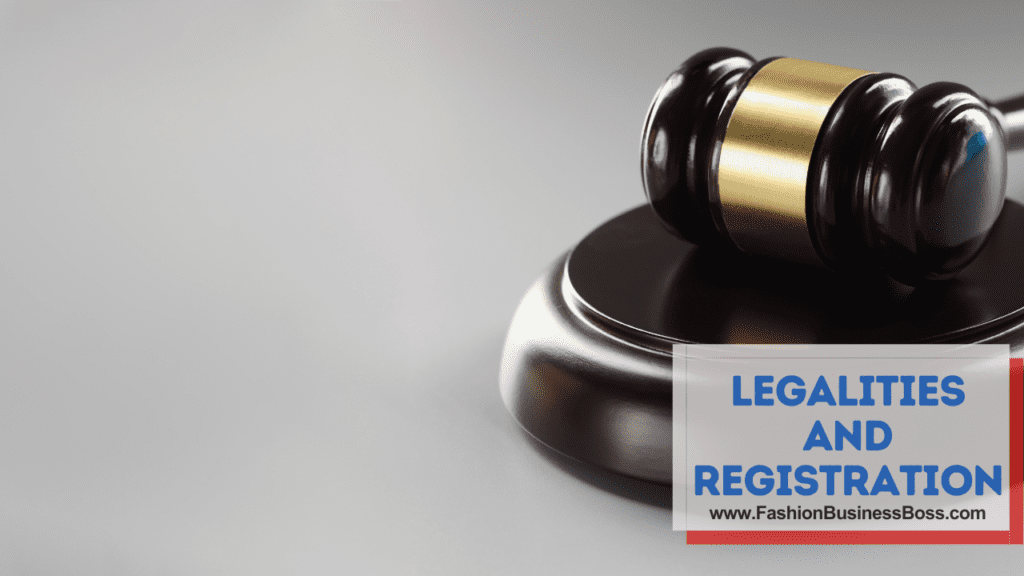Dreaming of owning a clothing boutique? You’re not alone! The fashion industry is bustling with opportunities for creative entrepreneurs like you.
To open your own clothing boutique, start by defining your concept, researching the market, crafting a solid business plan, and selecting the perfect location. Curate a unique inventory, establish a strong online presence, and provide exceptional customer service.
In the article, we will walk you through the steps to turn your passion for fashion into a thriving business.
Define Your Boutique’s Concept

In the initial stages of launching your clothing boutique, it’s essential to establish a clear and well-defined concept for your store. This concept serves as the fundamental framework upon which your boutique will be built, guiding your decisions and actions as you progress. To achieve this:
Firstly, pinpoint your boutique’s Unique Selling Point (USP). Determine what sets your boutique apart from others. This uniqueness could revolve around offering eco-friendly clothing, specializing in handmade and one-of-a-kind pieces, or having a distinct focus on a particular style or trend. Identifying your USP is the cornerstone of attracting customers who resonate with your distinct offerings.
Secondly, make a choice between catering to a specific niche or offering a broader range of styles. Deciding whether your boutique will focus on a particular niche, such as vintage clothing or activewear, or if it will provide a more extensive selection of fashion choices is pivotal. This decision can greatly influence your target audience and marketing strategies.
Lastly, consider the identity you want your boutique to convey. Is it a modern and trendy destination, or does it exude classic and timeless charm? The boutique’s identity should be a reflection of the preferences and tastes of your intended customer base.
Read more about: Style by Design: Creating Your Clothing Line
Market Research
Market research is an essential step in the process of opening your clothing boutique. It’s like the compass that points you in the right direction. Here’s why it matters and how to do it:
Firstly, research is about understanding your potential customers. This means finding out who they are, what they like, and what they’re looking for in clothing. It’s like getting to know your future friends. This knowledge will help you offer products that they’ll love.
Secondly, you should study your competitors. These are the other players in the fashion game. Look at what they’re doing, what works for them, and what doesn’t. This is a bit like watching a sports match to learn the strategies. By understanding your competitors, you can find ways to stand out and do things differently.
Lastly, keep an eye on market trends. Trends are like the weather forecast for fashion. Knowing what’s hot and what’s not can guide your inventory choices. If, for example, neon colors are in, you might want to stock some neon items.
Business Plan and Financing
Creating a comprehensive business plan is a crucial step when preparing to open your clothing boutique. Think of it as the blueprint for your store’s journey. Here’s why it’s important and how to go about it:
Firstly, a business plan is like a roadmap. It helps you understand where you’re going and how you’ll get there. In this plan, you should detail the structure of your boutique, such as whether it’s a sole proprietorship or a partnership. Describe your boutique’s goals, like how much you aim to sell and achieve. Include financial projections, which are like predictions of how much money you’ll make and spend.
Secondly, you’ll need funding to turn your boutique dream into reality. This can come from your personal savings, loans from a bank, or investments from individuals interested in your venture. Having a solid business plan can make it easier to secure financing because it shows potential lenders or investors that you’ve thought everything through.
Legalities and Registration

In this step, we’re diving into the legal side of opening your clothing boutique. It’s all about making sure you’re following the rules. Here’s what you need to know:
Firstly, you must officially register your business. Think of this as giving your boutique an identity in the eyes of the government. This involves choosing a business name, deciding on the legal structure (like a sole proprietorship or LLC), and completing the required paperwork. It’s a bit like getting a birth certificate for your boutique.
Secondly, you’ll need the necessary licenses and permits. These are like permission slips that allow you to operate legally. The specific licenses you need can vary depending on your location and the type of clothing you sell. It’s essential to research and obtain all the correct licenses to avoid legal issues down the road.
Lastly, it’s wise to consult with a legal expert. They’re like the guides who help you navigate the legal maze. A legal expert can ensure that you’re meeting all the local and federal regulations. It’s a bit like having a knowledgeable friend who can steer you in the right direction.
The legalities and registration process are like building a solid foundation for your boutique. It might not be the most exciting part, but it’s essential to ensure your business operates smoothly and within the law.
Read more about: Tailored to You: How to Begin Crafting Your Clothing?
Location
Selecting the right location for your clothing boutique is a critical decision. Think of it as choosing the perfect spot for your new home. Here’s what you need to consider:
Firstly, prioritize a location with high foot traffic. This means there are lots of people walking by your boutique every day. It’s like setting up your lemonade stand on a busy street instead of a quiet alley. High foot traffic increases the chances of potential customers noticing your store.
Secondly, proximity to your target audience is essential. Your target audience is the group of people most likely to buy from your boutique. Locate your store where these potential customers live or work. It’s a bit like fishing in a pond full of fish rather than a dry desert.
Lastly, when negotiating leases, pay close attention to rent costs and terms. This is like making sure you can afford the rent and understanding the rules of your lease. Negotiating carefully can help you secure a favorable deal, saving you money in the long run.
Choosing the right location is like planting a tree in fertile soil. It increases the chances of your boutique flourishing. A well-chosen location can make a significant difference in your store’s growth.
Boutique Design and Layout
Designing the interior of your clothing boutique is an essential step to ensure your store’s appeal and functionality. Think of it as arranging your living room to be comfortable and welcoming. Here’s how to go about it:
Firstly, consider your boutique’s interior design as a way to communicate your brand’s identity. This means choosing colors, decor, and furnishings that align with the image you want to project. For example, if your brand is all about eco-friendliness, using natural materials and green tones can convey this message effectively.
Secondly, creating an inviting atmosphere is crucial. Think of this as making your home cozy for guests. Lighting, music, and overall ambiance play a significant role. Good lighting is like natural sunlight in your living room—it highlights everything beautifully. The right background music can set the mood, making shoppers feel comfortable.
Lastly, how you arrange your merchandise matters. It’s like organizing your belongings neatly in your home. Keep things organized and visually appealing. Arrange clothing in a way that makes it easy for shoppers to browse and discover items. Use displays and shelving that showcase your products effectively.
Inventory Selection

Carefully choosing what to stock in your clothing boutique is a critical step in shaping your store’s identity and attracting customers. Imagine it as selecting the ingredients for a recipe. Here’s how to approach it:
Firstly, your inventory should align with your boutique’s concept, which you defined earlier. Think of it as ensuring all the ingredients you choose go well together to create a delicious dish. If your boutique focuses on vintage fashion, for instance, stock vintage clothing and accessories that fit that theme.
Secondly, collaborating with fashion wholesalers and designers is like getting high-quality ingredients from trusted suppliers. It ensures you have a variety of fashionable items to offer your customers. You can also consider consignment arrangements where you display and sell products on behalf of local designers or artists.
Lastly, maintaining a balanced mix of trendy and timeless pieces is crucial. This is like having both classic recipes that people love year-round and special dishes that change with the seasons. It keeps your inventory fresh and appeals to a broad range of customers.
Inventory selection is like carefully choosing the ingredients for a delicious meal. Your choices should align with your boutique’s concept, come from reliable sources, and provide a mix of timeless and trendy options. A well-curated inventory is the key to attracting and satisfying your customers.
Read more about: Stylish Beginnings: Best Shirts to Start Your Clothing Line
Pricing and Profit Margins
Determining the right prices for the products in your clothing boutique is a critical aspect of your business. Think of it as setting a fair and balanced budget for your household. Here’s how to approach it:
Firstly, it’s important to set prices that are competitive but also allow you to make a profit. Just like your household budget should cover all your expenses, your prices should cover your costs and leave room for profit. Consider the expenses related to acquiring and maintaining your inventory, as well as the costs associated with running your boutique.
Secondly, factor in markups. This is like adding a bit extra to your budget for savings or unexpected expenses. In the boutique world, it’s common to apply a markup to your cost price to ensure you’re making a profit. However, it’s essential to strike a balance so that your prices remain attractive to customers.
Lastly, keep an eye on what your competitors are charging. This is like checking prices at other stores before making a purchase. Understanding the pricing landscape in your market can help you make informed decisions. Ensure that your customers perceive value in your products compared to what they can find elsewhere.
Marketing and Branding
Marketing and branding play a significant role in introducing your clothing boutique to the world and building a connection with your audience, much like making new acquaintances. Here’s how to go about it:
To begin, creating a robust online presence is akin to offering a warm welcome to potential customers. Craft a user-friendly website that allows visitors to navigate effortlessly and make purchases. Likewise, establish engaging profiles on popular social media platforms, such as Instagram and Facebook, to connect with your audience effectively.
Next, weave the narrative of your brand through compelling visuals and engaging content, similar to sharing your life story with new acquaintances. Utilize high-quality images and well-crafted posts to showcase your products and the lifestyle they represent. This storytelling approach helps customers form a personal connection with your boutique.
Lastly, employ various marketing strategies to spread the word, much like extending invitations to gatherings. Send out informative email campaigns to keep your customers updated on promotions and new arrivals. Implement search engine optimization (SEO) on your website to ensure it appears prominently in online searches. Forge partnerships with influencers who resonate with your brand to reach a wider audience.
Staffing and Training

In this step, we’ll discuss the importance of building a team for your clothing boutique and making sure they’re well-prepared to serve your customers. Think of it as assembling a group of friends who share your interests. Here’s what you need to do:
Firstly, when hiring your team, look for individuals who have a genuine passion for fashion, much like inviting friends who share your hobbies to join your circle. They should not only be enthusiastic about clothing but also capable of providing excellent customer service. Friendly and helpful staff can enhance the shopping experience and keep customers coming back.
Secondly, investing in training for your staff is essential. It’s similar to teaching your friends about your favorite activities so you can enjoy them together. Ensure that your team is knowledgeable about your products, so they can answer customer questions with confidence. Training should also cover styling advice, as this can be a valuable service that sets your boutique apart.
Read more about: The Art of Apparel: Your Clothing Line Business Plan
Grand Opening
Your boutique’s grand opening is a momentous occasion, much like a big celebration with friends and family. It’s an opportunity to introduce your boutique to the community and generate excitement. Here’s how to go about it:
To start, plan a memorable grand opening event that will leave a lasting impression, similar to organizing a fantastic party. Consider what will make your event special, whether it’s live music, refreshments, or even a fashion show. Creating a unique and enjoyable experience will draw people in and make them curious about your boutique.
Next, entice customers to attend your grand opening by offering exclusive discounts and promotions. Think of these as party favors or special treats for your guests. Discounts on certain items, limited-time offers, or gift cards for early shoppers can motivate people to visit your boutique on opening day.
The grand opening of your boutique is like hosting a fun and exciting party to kickstart your business. Planning a memorable event and offering special incentives will help create a buzz in the community and encourage people to explore your boutique. It’s a fantastic way to make a memorable entrance into the fashion world.
Conclusion
Opening your own clothing boutique is a thrilling journey. By following these steps and staying dedicated, you’ll be well on your way to realizing your dream. Remember, the fashion world is ever-evolving, so stay attuned to trends and customer preferences to keep your boutique thriving.
Frequently Asked Questions

Q1: What are the essential legal requirements for opening a clothing boutique?
A1: Essential legal requirements typically include business registration, obtaining necessary licenses, and compliance with local regulations, often requiring legal consultation.
Q2: How can one determine the right location for a clothing boutique?
A2: The ideal location should have high foot traffic and proximity to the target audience. Lease negotiation should factor in rent costs and terms.
Q3: What steps should be taken to curate an appealing inventory for a boutique?
A3: Curating an appealing inventory involves collaboration with fashion wholesalers, designers, or considering consignment arrangements. A balanced mix of trendy and timeless pieces is recommended.
To learn more about starting your own clothing business, check out my startup documents here.
Please note that the contents of this blog are for informational and entertainment purposes only and should not be construed as legal advice. Any action taken based on the information provided in this blog is solely at your own risk. Additionally, all images used in this blog are generated under the CC0 license of Creative Commons, which means they are free to use for any purpose without attribution.

Meet Shawn Chun: Entrepreneur and Fashion Business Fan.
I’m a happy individual who happens to be an entrepreneur. I have owned several types of businesses in my life from a coffee shop to an import and export business to an online review business plus a few more and now I create online resources for those interested in starting new ventures. It’s demanding work but I love it. I do it for those passionate about their business and their goals. That’s why when I meet a designer or boutique owner at a craft fair, farmers market, retail location or anywhere else I see myself. I know how hard the struggle is to retain clients, find good employees and keep the business growing all while trying to stay competitive.
That’s why I created Fashion Business Boss: I want to help fashion business owners like you build a thriving business that brings you endless joy and supports your ideal lifestyle.

